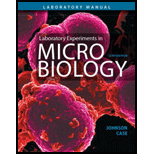
Concept explainers
Why is mannitol salt agar used as a selective medium for normal skin microbiota?
To analyze:
The reason for the usage of mannitol salt agar medium as selective medium for normal skin microbiota.
Introduction:
Many microbes lack the efficiency to reside on normal skin as its keratin containing cells making up a dry layer does not enable certain microbes to adhere and multiply. Another reason is that the oil glands secrete sebum that inhibits the growth of bacterium and there is a high concentration of salt. Bacterium that is tolerant to the salty environment only can survive on skin, hence identifying these salt tolerant bacterium requires a special medium. Mannitol salt agar comes as the answer for that.
Explanation of Solution
Mannitol salt agar comprises of majority of Sodium chloride, casein digest, animal tissue digest, beef extract, D-mannitol, phenol red and agar. As it contains high concentration of salt approximately 7.5%-10% it favours the growth of bacterium like Staphylococcus. It acts as a differential medium bacterium that ferments mannitol. Phenol red which is the pH indicator helps to identify acid producing bacterium.
Thus mannitol salt agar is used as selective media for skin microbes.
Want to see more full solutions like this?
Chapter 45 Solutions
Pearson eText for Laboratory Experiments in Microbiology -- Instant Access (Pearson+)
- Please correct answer and don't used hand raiting and don't used Ai solutionarrow_forward2. In one of the reactions of the citric acid cycle, malate is oxidized to oxaloacetate. When this reaction is considered in isolation, a small amount of malate remains and is not oxidized. The best term to explain this is a. enthalpy b. entropy c. equilibrium d. free energy e. loss of energyarrow_forward18. The citric acid cycle takes place in a. the chloroplasts b. the cytosol c. the inner mitochondrial membrane d. between the two mitochondrial membranes e. the mitochondrial matrix 40 WILarrow_forward
- 8. Most reactions of anaerobic respiration are similar to a. aerobic respiration b. photosynthesis c. lactic acid fermentation d. alcoholic fermentation e. both c and darrow_forward12. Which of the following molecules can absorb light? a. Pigments b. Chlorophyll c. Rhodopsin d. Carotenoids e. All of the abovearrow_forwardWhich of the following proteins or protein complexes is directly required for the targeting of mitochondrial inner membrane multipass proteins, such as metabolite transporters, whose signal sequence is normally not cleaved after import? OA. TIM22 OB. TIM23 C. OXA OD. Mia40 OE SAMarrow_forward
- QUESTION 9 An animal cell has been wounded and has a small rupture in its plasma membrane. Which of the following is more likely to happen next? OA. The cell rapidly cleaves by cytokinesis. OB. The rate of receptor-mediati endocytosis is increased. OC. The rate of exocytosis is increased. OD. The rate of pinocytosis is increased.arrow_forwardFor the a subunit of a trimeric G protein, A. a G-protein-coupled receptor GPCR) acts as a guanine nucleotide exchange factor (GEF), whereas a regulator of G protein signaling (RGS) can act as a GTPase-activating protein (GAP). B. a GPCR acts as a GAP, whereas an RGS can act as a GEF. C. both a GPCR and an RGS can act as a GEF. O D. both a GPCR and an RGS can act as a GAP OE. None of the above.arrow_forwardA cell expresses a transmembrane protein that is cleaved at the plasma membrane to release an extracellular fragment. The fragment binds to receptor proteins on nearby cells and activates signaling pathways resulting in altered gene expression patterns in the cells. What form of intercellular signaling does this represent? OA. Contact-dependent signaling B. Paracrine signaling OC. Synaptic signaling D. Endocrine signaling E. Autocrine signalingarrow_forward
- Which of the following drive nuclearly encoded proteins import into the mitochondrial matrix? OA. ATP hydrolysis OB. Membrane Potential OC. K+ Ions OD. A and B OE. None of the abovearrow_forwardWhich of the following statements is true regarding Cholesterol import into the cell? OA. It is transported within LDL B. Receptor mediated endocytosis is involved OC. Release of cholesterol occurs in the Lysosome D. All of the above are true statements OE. None of the above are true statementsarrow_forwardIn which of the following schematic drawings of signaling pathways does the activation of the receptor lead to gene expression? Activating and inhibitory steps are indicated with (+) and (-), respectively. OA OB ㅇㅂㅇㅂㅇㅁ (+) Gene Expression Activated Signaling proteins Transcription receptor activator Bl D Gene Expression Gene Expression ㅁㅁㅇ Gene Expression Gene Expressionarrow_forward
- Understanding Health Insurance: A Guide to Billin...Health & NutritionISBN:9781337679480Author:GREENPublisher:CengageEssentials of Pharmacology for Health ProfessionsNursingISBN:9781305441620Author:WOODROWPublisher:Cengage
- Surgical Tech For Surgical Tech Pos CareHealth & NutritionISBN:9781337648868Author:AssociationPublisher:Cengage
 Principles Of Radiographic Imaging: An Art And A ...Health & NutritionISBN:9781337711067Author:Richard R. Carlton, Arlene M. Adler, Vesna BalacPublisher:Cengage Learning
Principles Of Radiographic Imaging: An Art And A ...Health & NutritionISBN:9781337711067Author:Richard R. Carlton, Arlene M. Adler, Vesna BalacPublisher:Cengage Learning





